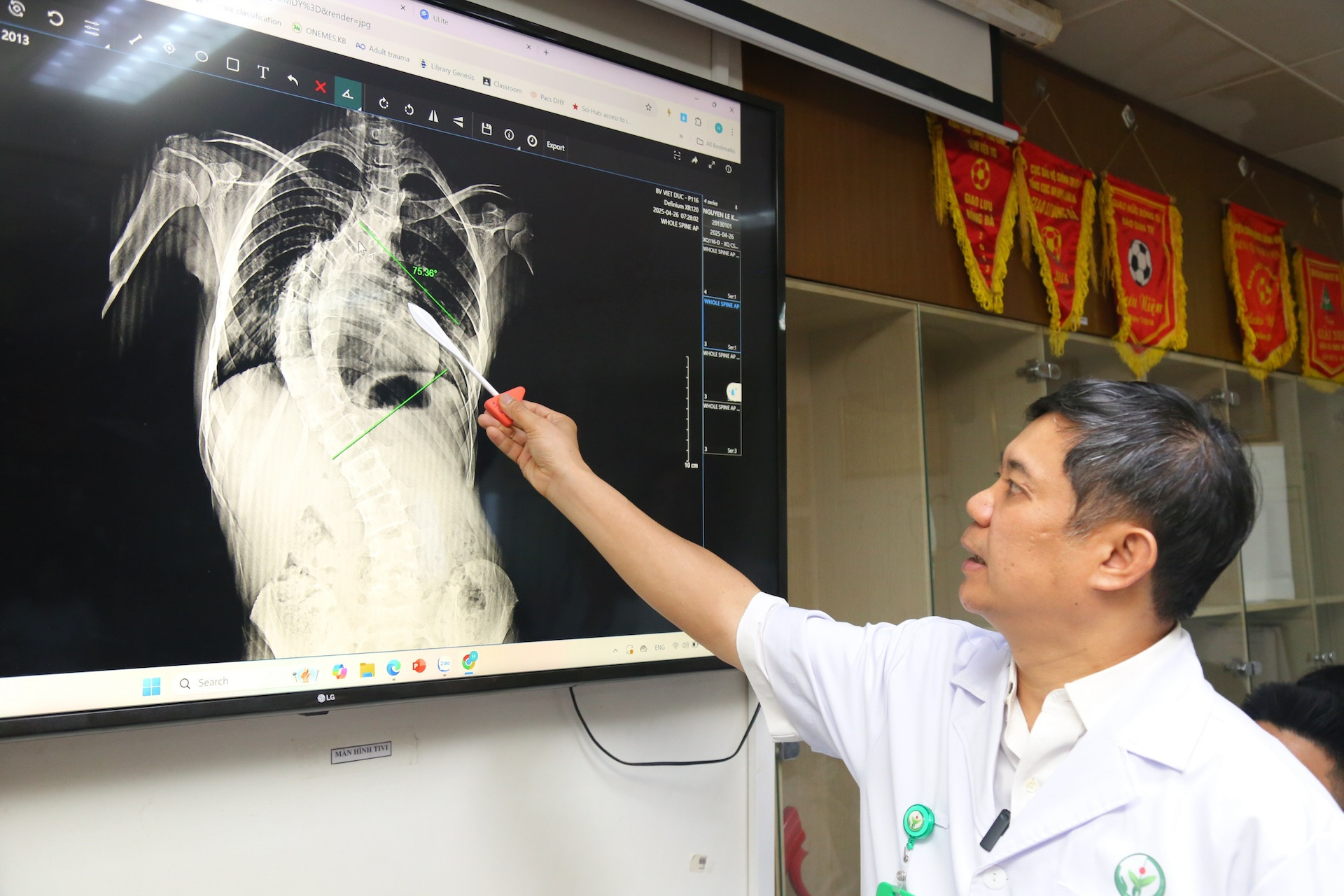
When her daughter turned five, T.N. from Hanoi was shocked when a relative, a medical professional, noticed signs of scoliosis in the girl.
“She often fell while walking or running, her legs were uneven, and her shoulders unbalanced,” N. said. Over eight years, N. took her daughter to major hospitals, but the scoliosis did not improve. During the three years of the Covid-19 pandemic, the condition worsened rapidly, with deformation progressing by over 10 degrees annually.
Associate Prof Dr Dinh Ngoc Son, Head of the Spine Surgery Department at Viet Duc Friendship Hospital, examined the 13-year-old using the Adam’s test, measuring chest curvature and spinal rotation, combined with imaging. He found her spine curved by nearly 85 degrees.
The uncommon condition caused spinal deformity, a significantly lower left shoulder, visible rib and back hump when bending forward, and a 30-degree vertebral rotation.
“Unfortunately, the condition was detected late, when the golden period was over. If the condition had been identified before puberty with a curve of under 60 degrees, interventions like bracing or growth rods could have controlled progression,” Dr. Son said.
Now, with a rigid curve and deformed spine, the girl also suffers from many related issues. Surgery would be a complex, high-risk procedure requiring thorough evaluation.
This case isn’t the most severe Son has ever seen. “Some children have curves of 90-140 degrees, with C-shaped spines twisting ‘like a dragon,’” he told VietNamNet.
Scoliosis is relatively common in children, with a prevalence of about 0.5 to 1 percent of the population. School health screenings show 7-9 percent of children have suspected scoliosis signs, according to Son. Causes are often unclear, linked to congenital factors, neuromuscular disorders, or prolonged poor posture.
For children under 10 with early discovered scoliosis, untreated cases can lead to severe consequences, primarily affecting the cardiovascular system, lungs, and abdomen.
In principle, the chest fully develops between ages 5-8, and scoliosis during this period can collapse lungs, impairing respiratory function and causing breathing difficulties. The heart and major blood vessels may also be compressed. Lumbar scoliosis can compress the abdominal cavity, hindering organ development.
However, not all scoliosis cases require surgery, according to Son. Doctors will consider many factors such as age and degree of curvature, to have appropriate indications such as wearing orthopedic braces, doing exercise, wearing a plaster cast, or surgery.
It is important that children have scoliosis detected early, treated promptly with appropriate methods, minimizing complications that cause severe spinal deformities and seriously affect the physical and psychological development of children.
Vo Thu